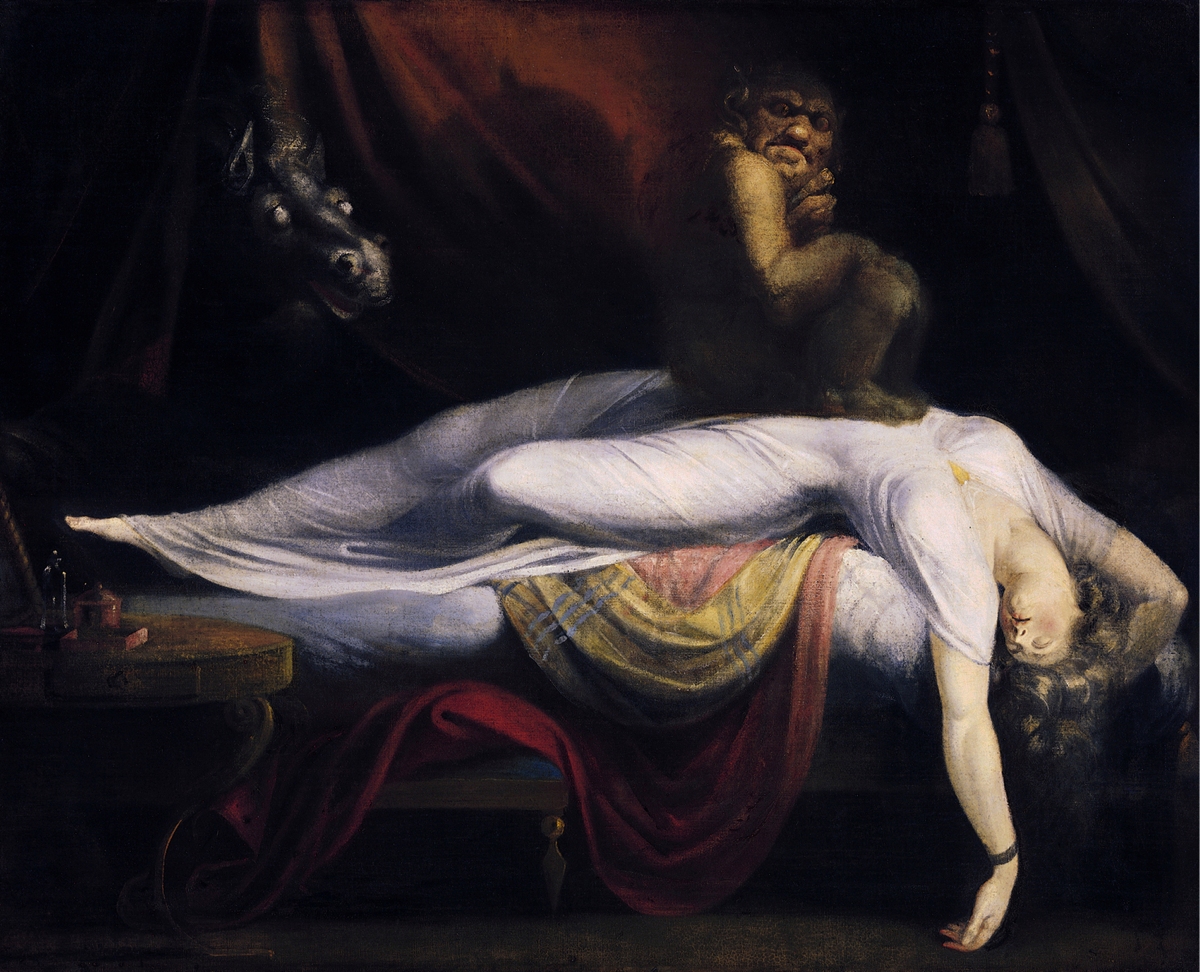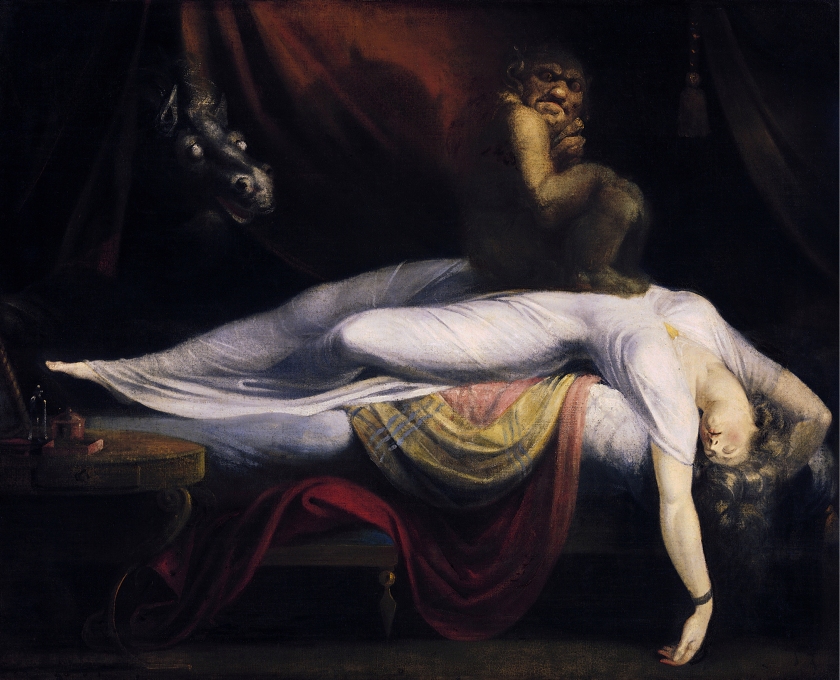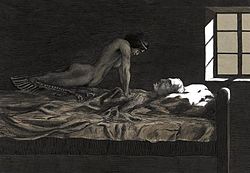It killed more than 20 million Europeans, almost one-third of the continent’s population, but arrived silently aboard 12 Genoese trading ships docked at the Sicilian port of Messina in 1347. Onlookers who had come to welcome the ships were met with a terrible sight: many of the sailors had died at sea and the remaining crew on board these ships were severely ill. With the pain of illness, many of the sailors had become insane and were covered in oozing black boils. By the time any action was taken to make the ships leave, the affliction that had struck down the sailors had already jumped ship. By the time the sickness had run its course, it had cut down 75 million people, though this is only an estimate, worldwide. I’m speaking, of course, of The Black Plague.
Plague may take three forms (www.medicinenet.com):
1. Bubonic plague
In this form of the infection, bacteria infiltrate the lymph nodes, causing enlarged, painful, tender lymph nodes called buboes. Accompanying symptoms are fever, chills, headaches, and weakness. If not treated, the infection can spread to other areas of the body. This is the most common form seen in the few U.S. infections.
2. Septicemic plague
This form of plague is a result of plague bacteria entering the bloodstream. It can occur on its own or it may develop from bubonic plague. Symptoms include fever, chills, weakness, abdominal pain, and shock. There can be bleeding and tissue death, especially of the fingers and toes. These dying tissues may appear black, hence the name Black Death.
3. Pneumonic plague
In the pneumonic form of the illness, symptoms of other types of plague can be present, but the characteristic clinical picture of pneumonia is present. The plague bacteria spread to the lungs or infect the lungs directly when infected droplets in the air are inhaled. This is the only form of plague that can be transmitted from person to person. Shortness of breath, chest pain, fever, and cough with watery or bloody mucus production are symptoms of pneumonic plague.
According to History.com, many early Europeans believed the plague was a punishment from God itself.
“Because they did not understand the biology of the disease, many people believed that the Black Death was a kind of divine punishment–retribution for sins against God such as greed, blasphemy, heresy, fornication, and worldliness. By this logic, the only way to overcome the plague was to win God’s forgiveness. Some people believed that the way to do this was to purge their communities of heretics and other troublemakers–so, for example, many thousands of Jews were massacred in 1348 and 1349. (Thousands more fled to the sparsely populated regions of Eastern Europe, where they could be relatively safe from the rampaging mobs in the cities.)
Some people coped with the terror and uncertainty of the Black Death epidemic by lashing out at their neighbors; others coped by turning inward and fretting about the condition of their own souls. Some upper-class men joined processions of flagellants that traveled from town to town and engaged in public displays of penance and punishment: They would beat themselves and one another with heavy leather straps studded with sharp pieces of metal while the townspeople looked on.”
https://www.history.com/topics/black-death
I think it’s safe to say that everyone went a little mad. Their friends, neighbors and family members were dying all around them and it seemed as if the world they knew was disintegrating before their eyes. Their livestock died, the loss of so many sheep actually led to a wool shortage across Europe. It was a culture of insanity. I guess that’s why many people in Norway, both those suffering from plague symptoms and those looking on, believed that their afflictions had something to do with a creature from Norwegian folklore: Pesta.

In Norwegian folk legend, Pesta is an old woman who carries both a rake and a broom. It is also said that Pesta, the plague hag, carries pestilence with her. If Pesta brings her rake, some may survive the plague and pass through the teeth, but if she’s carrying her broom, there will be no survivors.
SIDE NOTE:
It’s no small wonder that the name Pesta is located on a list of popular baby names at number 71,580. If you hate your kid, name them Pesta.
As I was searching Google, I happened upon a list of baby names. Pesta sits around the 71k mark (predictable.) I scroll down and see there is no “meaning” for this particular baby name. There is, however, a little button you can push to suggest one. Guess what I wrote?
Plague Hag.
I’m sure that whoever checks that email will be stupefied.
ANYWAY!
The WordPress site Myths and Microbes states that Pesta arrives by a ghost ship filled with rats (I’ll tackle that in a little bit). The personification of an unseen force is a common theme in many folklore tales. For example, The Hag (of Newfoundland folklore) is a four-legged creature that sits upon your chest and freezes you to the spot. You’re unable to move or scream as it stares down at you with black eyes, its long, stringy hair brushing your face. Today, we know that this strange feeling some of us experience between sleep and wakefulness is actually something called sleep paralysis, but before there was a clinical diagnosis available to explain away fears there were a lot of people who slept with boards with nails in them (supposedly the Hag would get stabbed by the nails and run away, proof that folklore in no way has to be logical) across their chests at night.
According to Myths and Microbes, “This type of personification of death and disease is common during the late medieval period. It represents an attempt to explain a horrifying experience. The folklore of the black plague developed through observation of events that must have seemed inexplicable to the people living through them. We can, however, learn something about how the events unfolded through a careful examination of the folklore of Pesta. Folklorists argue that folklore can be true and can be the results of individuals “rationally perceiving a real situation.” Through the story of Pesta and her path across Norway, we see an attempt to explain the spread of a disease based on actual observations. While the entity of Pesta is not a literal being, we can imagine her as a representation of the microbe that we know today.”
Pesta: The Personification of the Black Plague in Norway
The plague, known also by its Latin name Yersinia Pestis (pestilence), traveled from port to port by ship so it is no wonder that Pesta (personification of the plague itself) also used that mode of transportation. The folk legend states that Pesta traveled on a ghost ship filled with rats. But not only was Pesta the harbinger of grotesque suffering, those sailors that traveled by that same means were carriers of the plague and victims of Pesta.
Rats were said to be carriers of the plague during the first outbreaks. The plague bacteria is actually transmitted by fleas on the animals, not the rats themselves, but people had no way of knowing this. They simply associated the rats with the illness and certain folk legends in certain parts of the world perpetuated this belief.
Early Forms of Treatment
From The History Learning Site (http://www.historylearningsite.co.uk/medieval-england/cures-for-the-black-death/):
| Vinegar and water treatment | If a person gets the disease, they must be put to bed. They should be washed with vinegar and rose water |
Lancing the buboes |
The swellings associated with the Black Death should be cut open to allow the disease to leave the body. A mixture of tree resin, roots of white lilies and dried human excrement should be applied to the places where the body has been cut open. |
|
Bleeding |
The disease must be in the blood. The veins leading to the heart should be cut open. This will allow the disease to leave the body. An ointment made of clay and violets should be applied to the place where the cuts have been made. |
| Diet | We should not eat food that goes off easily and smells badly such as meat, cheese and fish. Instead we should eat bread, fruit and vegetables |
|
Sanitation |
The streets should be cleaned of all human and animal waste. It should be taken by a cart to a field outside of the village and burnt. All bodies should be buried in deep pits outside of the village and their clothes should also be burnt. |
|
Pestilence medicine |
Roast the shells of newly laid eggs. Ground the roasted shells into a powder. Chop up the leaves and petals of marigold flowers. Put the egg shells and marigolds into a pot of good ale. Add treacle and warm over a fire. The patient should drink this mixture every morning and night. |
Witchcraft |
Place a live hen next to the swelling to draw out the pestilence from the body. To aid recovery you should drink a glass of your own urine twice a day. |
Face of the Plague
Plague doctors were often hired to treat entire communities and paid a salary by said communities. The dominant theory around the 17th century was that miasma (“bad air”) was to blame for the spread of plague. This is why, on their faces, doctors wore masks with long “beaks.” The beak would be packed full of sweet-smelling mixes of herbs and flowers and the eyes of the mask would be covered with glass, “sealing” in the “good air” and forcing out the bad. Wikipedia states, “Medical historians have attributed the invention of the “beak doctor” costume to Charles de Lorme, who adopted in 1619 the idea of a full head-to-toe protective garment, modeled after a soldier’s armor. This consisted of a bird-like mask with spectacles, and a long leather (Moroccan or Levantine) or waxed-canvas gown which went from the neck to the ankle. The over-clothing garment, as well as leggings, gloves, boots, and a hat, were made of waxed leather. The garment was impregnated with similar fragrant items as the beak mask.”

Many people believe that the beaked mask, large hat, and long waxed robe were worn during the original outbreaks of plague. This is not the case as the miasma theory didn’t come along until much later.
Doctors would travel from town to town, often held for quarantine themselves due to their proximity to the afflicted, and treated sufferers as best they could. They carried a long staff so that they would have as little contact with the patient as possible. They would use it to point to various parts of the body, keep a safe distance from people who insisted on walking too close to them, or to help a patient remove his clothing. Maintaining a safe distance and wearing a garb that was covered in a waxy substance actually helped the doctor avoid getting sick. The wax on the leather would not allow liquid to permeate the outfit and with all of those people coughing bloody sputum everywhere, it likely saved many doctor’s lives. As for the miasma, that was a bit of a miss medically speaking although I’m sure all of the rotting corpses being thrown into the street and picked up in wagons to be burned didn’t smell too appealing.
Your Fellow Haunt Head,
Janine
hauntheadscast@gmail.com
Tweet us @hauntheadscast
Listen to episodes of Haunt Heads at hauntheads.podbean.com or wherever you listen to podcasts!


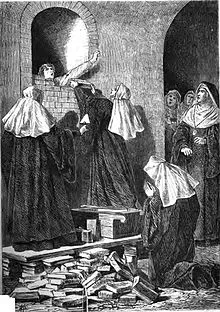
 If you know anything of the case of serial killer Elizabeth Bathory, The Blood Countess of 1610, who believed the blood of local virgins would keep her young forever, you already know about Immurement, or the practice of sealing an individual up in a wall or other confined space for a prolonged period of time. Bathory was sealed inside a tower in her castle and left with only a tiny opening for food. Likely very flat food. Bathory lasted four years in her prison, but some sentenced to immurement lasted far longer. Some didn’t last long at all.
If you know anything of the case of serial killer Elizabeth Bathory, The Blood Countess of 1610, who believed the blood of local virgins would keep her young forever, you already know about Immurement, or the practice of sealing an individual up in a wall or other confined space for a prolonged period of time. Bathory was sealed inside a tower in her castle and left with only a tiny opening for food. Likely very flat food. Bathory lasted four years in her prison, but some sentenced to immurement lasted far longer. Some didn’t last long at all.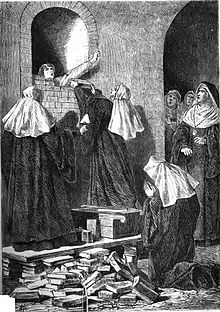

 arrived in the 16th century, they attempted to convert the Incas to Catholicism. This was likely due in part to the custom of immuring young women (aged 12 or younger) inside a water-less cistern as a form of sacrifice to the gods.
arrived in the 16th century, they attempted to convert the Incas to Catholicism. This was likely due in part to the custom of immuring young women (aged 12 or younger) inside a water-less cistern as a form of sacrifice to the gods. You’ve likely seen the episode of The Simpsons (Last Exit to Springfield) where Mr. Burns relates the story of a worker in his grandfather’s power plant is found with atoms in his pockets. As he is dragged away, Burns discusses labor unions and Japan’s economical and industrial prominence. He then remarks “If only we’d listened to that young man instead of walling him up in the abandoned coke oven.”
You’ve likely seen the episode of The Simpsons (Last Exit to Springfield) where Mr. Burns relates the story of a worker in his grandfather’s power plant is found with atoms in his pockets. As he is dragged away, Burns discusses labor unions and Japan’s economical and industrial prominence. He then remarks “If only we’d listened to that young man instead of walling him up in the abandoned coke oven.”
